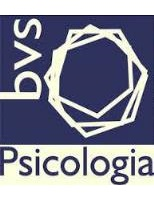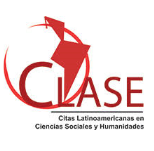Sobre o DSM-V
Palavras-chave:
diagnóstico, pesquisa, pobreza linguística, classificação científica, terapia narrativa, terapia construcionistaResumo
O Manual diagnóstico e estatístico dos Transtornos Mentais (Diagnostic and Statistical Manual of Mental Disorders; quinta edição; DSM-V) está a ponto de ser publicado, embora tenha havido consideráveis controvérsias em sua gestação. Neste trabalho faço uma revisão histórica crítica sobre os desenvolvimentos associados ao DSM-V, especialmente os desenvolvimentos relacionados às práticas de narrativa ou outras levadas a cabo por profissionais construcionistas. Relato os descobrimentos de uma pesquisa recém-completada na qual profissionais revelaram como respondem à influência do atual DSM-IV-TR em suas conversas com clientes, bem como as formas como responderam criativamente à tal influência. Fecho com sugestões para profissionais que trabalham junto a administrações que pedem o uso dos diagnósticos DSM-V em seu trabalho conversacional.Downloads
Referências
Abram, D. (1996). The spell of the sensuous: perception and language in a more-than-human world. New York, NY: Pantheon.
Agamben, G. (2009). ‘What is an apparatus?’ and other essays (D. Kishik & S. Pedatella, Trans.). Stanford, CA: Stanford University Press.
Aho, K., & Guignon, C. (2011). Medicalized Psychiatry and the Talking Cure: A Hermeneutic Intervention. Human Studies, 34, 293-308.
American Counseling Association. (2011, November 28). ACA Expresses DSM-5 Concerns to the American Psychiatric Association. Recuperado de http://www.counseling.org/PressRoom/NewsReleases.
aspx?AGuid=315a280b-4d0b-48af-9421-1f7d3f01b4b7.
American Psychiatric Association. (1952). Diagnostic and statistical manual of mental disorders (1st ed.). Washington, DC: American Psychiatric Association.
American Psychiatric Association. (1968). Diagnostic and statistical manual of mental disorders (2nd ed.). Washington, DC: American Psychiatric Association.
American Psychiatric Association. (1980). Diagnostic and statistical manual of mental disorders (3rd ed.). Washington, DC: American Psychiatric Association.
American Psychiatric Association. (1987). Diagnostic and statistical manual of mental disorders (3rd ed., revised). Washington, DC: American Psychiatric Association.
American Psychiatric Association. (1994). Diagnostic and statistical manual of mental disorders (4th ed.). Washington, DC: American Psychiatric Association.
Amundson, J., Stewart, K.. & Valentine, L. (1993). Temptations of certainty.Journal of Marital & Family Therapy, 19(1), 111–123.
Angell, M. (2011, July 14). The illusions of psychiatry. The New York Review of Books. Recuperado de: http://www.nybooks.com/articles/
archives/2011/jul/14/illusions-of-psychiatry/?pagination=false.
Bakhtin, M. (1981). The dialogic imagination. (M. Holquist, Ed.; C. Emerson & M. Holquist Trans.). Austin, TX: University of Texas Press.
Bateson, G. (1980). Mind and nature: a necessary unity. New York,NY: Bantam New Age Books.
Buck, J. (2003). Medicaid, Health Care Financing Trends, and the Future of State-Based Public Mental Health Services. Psychiatric Services, 54(7). Retrieved online: http://ps.psychiatryonline.org/article.
aspx?Volume=54&page=969&journalID=18 doi: 10.1176/appi.ps.54.7.969
Busch, R. (2012). Problematising social context in therapy evaluation practice/governance. In A. Lock & T. Strong (Eds.), Discursive perspectives in therapeutic practice (pp. 245–267). Oxford, UK: Oxford University Press.
Caplan, P. J. (1996). They say you’re crazy: how the world’s most powerful psychiatrists decide who’s normal. New York, NY: Da Capo Press.
Cooper, M., & McLeod, J. (2010). Pluralistic counselling and psychoterapy. London, UK: Sage.
Cushman, P. (1995). Constructing the self, constructing America: a cultural history of psychoterapy. New York, NY: Perseus.
Cushman, P., & Gilford, P. (2000). Will managed care change our way of being? American Psychologist, 55, 985-996. doi:10.1037/0003-066X.55.9.985
Danziger, K. (1997). Naming the mind: How psychology found its language.Thousand Oaks, CA: Sage.
Daston, L., & Galison, P. (2007). Objectivity. New York, NY: Zone Books.
Deleuze, J., & Guattari, F. (1987). A thousand plateaus: capitalism and schizophrenia. (B. Massumi, Trans.). Minneapolis, MN: University of Minnesota Press.
Dolnick, E. (2012). The clocwork universe: Isaac Newton, the Royal Society, and the Birth of the Modern World. New York, NY: Harper Perennial.
Eriksen, K., & Kress, V. E. (2005). Beyond the DSM story: Ethical Beyond the DSM story: ethical quandaries, challenges, and best practices.Thousand Oaks, CA: Sage.
Fleck, L. (1979). Genesis and development of a scientific fact. (T. J.Treen & R. K. Merton, Eds.; F. Bradley & T. J. Trenn, Trans.). Chicago, Il: University of Chicago Press. Original German edition published in 1935.
Foucault, M. (2006). The history of madness. New York, NY: Routledge.
Frances, A. (2011, August 1).DSM 5 will further inflate the ADD bubble [web log comment]. Recuperado de http://www.psychologytoday.com/blog/dsm5-in-distress/201108/dsm-5-will-further-inflate-the-add-bubble.
Frances, A. (2012, May 11). Diagnosing the D.S.M. Retrieved
online from the New York Times: http://www.nytimes.com/2012/05/12/opinion/break-up-the-psychiatric-monopoly.html?ref=us.
Galison, P. (2004). Einstein’s clocks anda Poincaré’s maps. New York, NY: W. W. Norton.
Gergen, K. J. (1990). Therapeutic professions and the diffusion of deficit. Journal of Mind and Behavior, 11, 353–368.
Goffman, E. (1961). Asylums: essays on the social situation of mental patients and other inmates. New York, NY: Doubleday Anchor.
Greenberg, G. (2010). Manufacturing depression: the secret history of a modern disease. New York, NY: Simon & Schuster.
Grob, G. N. (1991). Origins of DSM-I: A study in appearance and
reality. American Jorunal of Psychiatry, 148, 421–431.
Grunebaum, H., & Chasin, R. (1978). Relabeling and reframing
reconsidered: the beneficial effects of a pathological label. Family Process, 17, 449–455.
Hacking, I. (1998). Mad travelers: reflections on the reality of transietn mental illness. Cambridge, MA: Harvard University Press.
Harper, D., & Thompson, A. R. (2012). Qualitative research methods in mental health and psychoterapy: a guide for students and practitioners. Malden, MA: Wiley-Blackwell.
Hallward, P. (2005). The politics of prescription. The South Atlantic Quarterly, 104, 769-789. doi:10.1215/00382876-104-4-769
House, R. (2005). Therapy beyond modernity: deconstructing and transcending profession-centred therapy. London, UK: Karnac.
Hubble, M., Duncan, B., & Miller, S. D. (Eds.) (1999).The heart and soul of change: what works in therapy. Washington, DC: American Psychological Association.
Jabr, F. (2012). Field tests for revised psychiatric guide reveal reliability problems for 2 major diagnoses. Scientific American. Blogs May 6, 2012. Recuperado de: http://blogs.scientificamerican.com/observations/2012/0/06/field-test-for-revised-psychiatric-guide-reveal-reliability-problems-for-two-major-diagnoses/?WT_mc_id=SA_DD_20120507.
Jaspers, K. (1963). General psychopathology (J. Hoenig & M. W. Hamilton, trans.). Chicago, IL: University of Chicago Press. (Original published in 1923.).
Johnson, L. (1995). Psychoterapy in the age of accountability. New York, NY: W. W. Norton.
Latour, B. (1999). When things strike back – a possible contribution of ‘science studies’ to the social sciences. British Journal of Sociology, 51(1), 105-123.
Layard, R. (2006). Happiness: lessons from a new science. London, UK: Penguin.
Ledford, H. (2011). Mental-health guide accused of overreach. Nature, 479, Issue 731. Retrieved online: http://www.nature.com/news/mental-health-guide-accused-of-overreach-1.9291.
Levant, R. F. (2005, July). Report of the presidential task force on evidence-based practice. American Psychological Association.
Linton, J. M., Russett, J., & Taleff, M. J. (2008). Caught between a rock and a funding source. In L.Tyson, J. Culbreth, & J. Harrington (Eds.). Critical incidents in clinical supervision: addiction, community, and school counseling (pp. 47–53). Alexandria, VA: American Counseling Association.
Lock, A. & Strong, T. (Eds.) (2012). Discursive perspectives in therapeutic practice. Oxford, UK: Oxford University Press.
Madsen, W. (1999). Collaborative therapy with multi-stressed families. New York, NY: Guilford.
Massumi, B. (2011). Semblance and event: activist philosophy and the ocurrent arts. Cambridge, MA: MIT Press.
Miller, G., & Strong, T. (2007). Constructing therapy and its
outcomes. In J. Gubrium & J. Holstein (Eds.). Handbook of constructionist research. (pp. 609–625). New York, NY: Guilford Press.
Moses, I. (2000). Is it ethical to deceive managed care companies? Journal of contemporary psychotherapy, 30, 217–237. doi:10.1023/A:1004195314702
Parker, I. (1999). Deconstructing diagnosis: Psychopathological practice. In C. Feltham (Ed.), Controversies in psychoterapy and counselling (pp. 104-112). London, UK: Sage.
Rapley, M., Moncrieff, J., & Dillon, J. (Eds.) (2011). De-medicalizing misery: psychiatry, psychology, and the human condition. New York, NY: Palgrave Macmillan.
Ricoeur, P. (1976). Interpretation theroy: discourse and the surplus of meaning. Fort Worth, TX: Texas Christian University Press.
Rogers, R., & Wupperman, P. (2007). Diagnostic interviews and clinical practice. In S. Ayers, A. Baum, C. McManus, S. Newman, K. Wallston, & R. West (Eds.). The Cambridge handbook of psychology, health, and medicine (pp. 251–255). New York, NY: Cambridge University Press.
Rose, N. (1990). Governing the soul. New York, NY: Routledge.
Rush, A. J. (2001). Practice guidelines and algorithms. In M. M. Weissman (Ed.). Treatment of depression: bridging the 21st century (pp. 213–242). Washington, DC: American Psychiatric Press.
Sells, S. (2012). Welcome to the new frontier: The many challenges of transporting evidence-based practices. Presentation to the International Family Therapy Association Conference. Vancouver, BC Canada.
Sharfstein, S. S. (1987). Third-party payments, cost containment, and DSM-III. In G. L.Tischler (Ed.), Diagnosis and classification in psychiatry: a critical appraisal of DSM III. (pp. 530–538). New York, NY: Cambridge University Press.
Shotter, J. (1993). Conversational realities: Constructing life through language. London: Sage.
Stiles, W., & Shapiro, D. (1989). Abuse of the Drug Metaphor in Psychotherapy Process-Outcome-Research. Clinical Psychology Research, 9, 521-543.
Strong, T. (1993). DSM-IV and describing problems in a family therapy. Family process, 32, 249-253.
Strong, T. (2000). Unpicking labels. New therapist, 6, (March/April), p. 36.
Strong, T., Lysack, M., & Sutherland, O. (2008). Considering the dialogic potentials of cognitive therapy. European Journal of Psychoterapy and Counselling, 10, 207–220.
Strong, T., Gaete Silva, J., Sametband, I, French, J., & Eeson, J. (2012). Counsellors respond to the DSM-IV-TR. Canadian Journal of Counselling and Psychotherapy, 46(2), 85–106.
Szasz, T. S., (1961). The myth of mental illness. New York, NY: Harper & Row.
Tucker, A.R., & Blythe, B. (2008). Attention to treatment fidelity in social work outcomes: A review of the literature from the 1990s. Social Work Research, 32(3), 185-190.
Turner, K. (2011). The screw that changed the world. Episode from Ideas with Paul Kennedy radio show: Canadian Broadcasting Corporation. Recuperado de: http://www.cbc.ca/ideas/episodes/2011/10/17/the-screw-that-changed-the-world.
Vico, G. (2001). New Science (D. Marsh, Trans.). London, UK: Penguin. (Original published in 1744.)
Watters. E. (2010). Crasy like us: globalizing the American Psyche. New York, NY: Free Press.
White, M. (1984). Pseudo-encopresis: From avalanche to victory, from vicious to virtuous cycles. Family Systems Medicine, 2, 150–160.
White, M. (1986). Negative explanation, restraint, & double description: A template for family therapy. Family Process, 25, 169–184.
Wilson, G. T. (2007). Manual based treatment: Evolution and evaluation. In T. A. Treat, R. R. Bootsin & T. B., Baker (Eds.), Psychological clinical science: papers in honor of Richard M. McFall (pp. 105–131). New
York, NY: Routledge.
Winslade, J. (2009). Tracing lines of flight: implications of the work of Gilles Deleuze for narrative practice. Family Process, 48, 332–346.
Wittgenstein, L. (1953). Philosophical Investigations. (E. Anscombe, Ed.). New York, NY: Macmillan.
Wylie, M. S. (1995). The power of DSM-IV: Diagnosing for dollars. Family Therapy Networker, 19(3)22–32.
Downloads
Publicado
Como Citar
Edição
Seção
Licença
Autores que publicam nesta revista concordam com os seguintes termos:- Autores mantém os direitos autorais e concedem à revista o direito de primeira publicação, com o trabalho licenciado simultaneamente sob uma Licença Creative Commons Attribution após a publicação, permitindo o compartilhamento do trabalho com reconhecimento da autoria do trabalho e publicação inicial nesta revista.
- Autores têm autorização para assumir contratos adicionais separadamente, para distribuição não-exclusiva da versão do trabalho publicada nesta revista (ex.: publicar em repositório institucional ou como capítulo de livro), com reconhecimento de autoria e publicação inicial nesta revista.
- Autores têm permissão e são estimulados a publicar e distribuir seu trabalho online (ex.: em repositórios institucionais ou na sua página pessoal) a qualquer ponto antes ou durante o processo editorial, já que isso pode gerar alterações produtivas, bem como aumentar o impacto e a citação do trabalho publicado (Veja O Efeito do Acesso Livre).

















